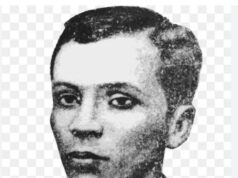FOR THE devotees of La Virgen Divina Pastora, all roads will lead to the Gapan City Catholic church for the celebration of its 50th anniversary of canonical crowning as patroness of the Three Kings Parish in Gapan and the Diocese of Cabanatuan.
The day will also mark the 28th anniversary of the declaration of the church in Gapan City as the “National Shrine of La Virgen Divina Pastora”. Five bishops and 50 priests are expected to come to offer Masses starting very early morning up to the afternoon High Mass. Lingayen-Dagupan Archbishop Socrates Villegas has been invited to be the main celebrant in the concelebrated Mass and officiate in the re-enactment of the crowning.
After the Mass, a grand procession will be held with all the images of the patron saints of each of the Gapan City barangays joining in. The theme of the celebration, according to Fr. Antonio Mangahas Jr., rector and parish priest, is “Paggunita, Pagbubunyi, Pagsasabuhay sa Patnubay ng Mahal na Ina Divina Pastora”.
Named hermano and hermana of the celebration are Gen. Ruperto Pabustan (retired) and Dr. Janette Valmonte de Leon-Padiernos, respectively. In connection with the celebration, an exhibit of the history and accomplishments of the 418-year-old parish was mounted on the interior wall of the church.
The La Virgen Divina Pastora, also called Divina Pastora or Divine Shepherdess, commands the wider attraction to the Catholic faithful of the two patron saints of Gapan City. The other are the “Three Kings” whose feast day is every first Sunday of the year.
The image of La Virgen Divina Pastora, which is centuries old, is made of wood about one-and-a-half-foot tall.
Several miracles and answered prayers were attributed to the image. “They include petitions granted, dreams realized and broken relationships restored. They were attributed by the supplicants to the loving intercession of Inang Divina,” said Mangahas.
Year-round, he said, thousands of devotees in Nueva Ecija and also from many provinces in Central Luzon and even outside the region come to visit and pray to the image permanently enthroned at the left side of the interior of the church.
“Our Divina Pastora here is probably the lesser known image in the line-up of Marian devotions in the country,” Mangahas said. “However, we take pride that its stature is unique here,” he added. Mangahas, citing historical records, said that on April 26, 1964, the “La Virgen Divina Pastora” was canonically crowned in Gapan City and declared patroness of the Diocese of Cabanatuan through a decree by Pope Paul VI.
On the same date 22 years after, the Gapan church was declared as a national shrine in honor of the patroness by the Catholic Bishops Conference of the Philippines, he added. The image is depicted as wearing a robe of white, her head covered with wide-brimmed hat, her left hand holding a cane or staff, and the right hand tapping a sheep resting on her lap.
One of two versions how the Divina Pastora was adopted here as a patroness indicated that the image was originally owned by the Valmonte family of Gapan. “Per our clan’s account, the image came from Spain,” according to Ramon Valmonte, a local journalist and a descendant of the Valmonte family.
“It was kept in the house of Juana dela Cruz Valmonte, then “kapitana” of a place called “Callos”, a village of Ibon, the original name of Gapan,” he added. Juana, continued his account, got to know the image, then popular as a religious icon in Spain, particularly in Siparia, Western Trinidad, and in Venezuela, through an Augustinian priest whom she approached in Manila to interpret her dream.
That dream apparently had something to do with the Virgin Mary depicted as “Divina Pastora”. The priest asked her to obtain an image La Virgen Divina Pastora which she did. Another version posited that an Augustinian priest brought the image to the wooden church in “Ibon”. But the image got lost, until one day, was found on a “callos” tree.
“We see interconnections, though, in these accounts. Probably, the image brought in by the priest was the one ordered by our Lola Juana from Spain. For how come the image had been in the heirloom of the Valmonte’s until it was donated to the church in 1986?” Valmonte said.
He said that the Pastora’s feast day was set every May 1 by the Valmonte family to symbolize thanksgiving for good rice harvest. Masses and a grand procession traditionally mark her feast day. “Several miracles have been attributed to our La Virgen Divina Pastora, including miraculous cure.
That’s why in the early days people from Pangasinan, La Union, Ilocos Sur, Ilocos , Abra, Cagayan, Isabela, Nueva Vizcaya, Bulacan, Bataan, and Zambales came here to pray before her,” Valmonte said.
The Three Kings Parish church in Gapan City is likewise a religious allure. Of Byzantine architecture, it was originally
made of bricks-stone-and lime and was constructed from 1856-1872. Its ceiling above the altar is adorned with a mural of the Holy Trinity. The Three Kings parish has been in existence since 1595.




